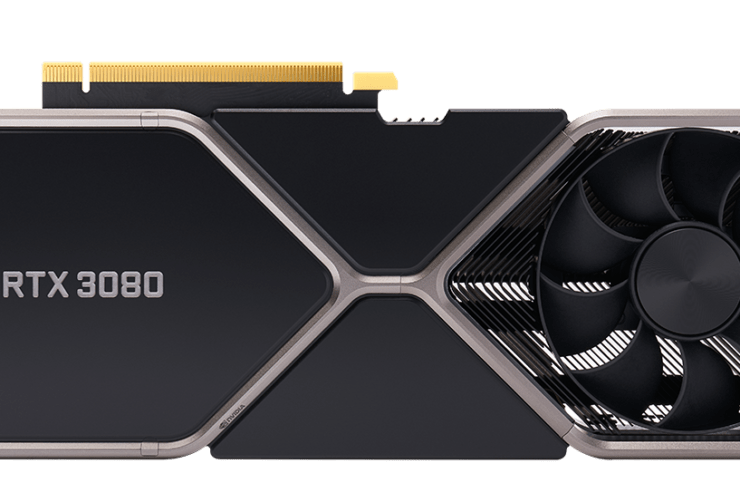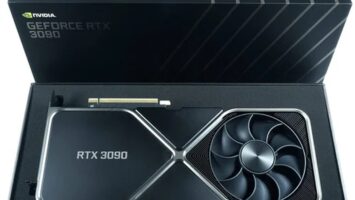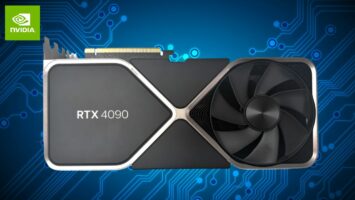Table of Contents
Introduction
The NVIDIA GeForce RTX 3080 is a powerful and feature-packed graphics processing unit (GPU) that is well-suited to gamers and content creators. With its support for ray tracing, DLSS, and NVLink, it is capable of delivering stunning visuals and impressive performance in a wide range of applications. In this blog post, we’ll take a closer look at the RTX 3080 GPU and what it has to offer. We’ll cover its specifications, performance, features, and compare it to other GPUs on the market. By the end of this article, you’ll have a good understanding of whether the RTX 3080 GPU is the right choice for you.
Specification Table
Here is a specification table for the RTX 3080 GPU:
| Specification | Details |
|---|---|
| GPU | NVIDIA Ampere |
| Process | 8nm |
| CUDA Cores | 8704 |
| Boost Clock | 1800 MHz |
| Memory | 10 GB GDDR6X |
| Memory Interface | 320-bit |
| Memory Bandwidth | 760 GB/s |
| Ray Tracing | Yes |
| DisplayPort | 3 x DisplayPort 1.4a |
| HDMI | 1 x HDMI 2.1 |
| VirtualLink | 1 x VirtualLink |
| NVLink | 2 x NVLink connectors |
| Power Connectors | 2 x 8-pin PCIe |
| Form Factor | 2.5-slot |
| Recommended Power Supply | 750W |
| Power Consumption | 320W |
| Recommended System Requirements | Intel Core i7 or equivalent |
This table should give you a good overview of the key specifications and features of the RTX 3080 GPU. It is worth noting that these specifications may vary depending on the specific model and manufacturer of the GPU. Be sure to check the manufacturer’s website or documentation for the most up-to-date and accurate specifications.
Performance
In terms of performance, the RTX 3080 GPU is one of the most powerful GPUs on the market. It is capable of delivering impressive frame rates in games, even at high settings and resolutions. In benchmarks, the RTX 3080 has consistently outperformed its predecessor, the RTX 2080, as well as other high-end GPUs such as the AMD Radeon RX 6800 XT. It is also well-suited to demanding workloads such as video editing and 3D rendering, thanks to its high CUDA core count and fast memory.
Pros
- Ray tracing support: The RTX 3080 GPU supports ray tracing, which allows for more realistic lighting and reflections in games and other graphics-intensive applications. This can greatly enhance the visual quality of games and other graphics, and it is a feature that is not available on older GPUs.
- DLSS support: The RTX 3080 GPU also supports DLSS (Deep Learning Super Sampling), which is a technology that uses artificial intelligence to improve the performance of games. DLSS works by using a neural network to analyze and upscale the resolution of a game, allowing it to run at higher frame rates without sacrificing visual quality.
- NVLink support: The RTX 3080 GPU has two NVLink connectors, which allow it to be used in multi-GPU configurations. This can further enhance its performance in games and other graphics-intensive applications, making it an appealing choice for users who want the ultimate in performance.
- High performance: In terms of raw performance, the RTX 3080 GPU is one of the most powerful GPUs on the market. It delivers impressive frame rates in games and is capable of running even the most demanding games at high settings and resolutions.
- Large memory: The RTX 3080 GPU also has 10 GB of GDDR6X memory, which is more than many other GPUs on the market. This can be beneficial for users who need the extra memory for demanding workloads such as video editing or 3D rendering.
Cons
- High cost: One of the main downsides of the RTX 3080 GPU is its high cost. It is one of the most expensive GPUs on the market, and it may not be a practical or cost-effective choice for everyone.
- Large size: The RTX 3080 GPU is also quite large, with a 2.5-slot form factor. This may not be ideal for users who have smaller cases or who are looking to build a compact system.
- Power consumption: The RTX 3080 GPU has a relatively high power consumption of 320W, which may be a concern for users who are trying to build a power-efficient system. It also requires two 8-pin PCIe power connectors, which may not be available on all power supplies.
- Compatibility issues: Some users may also encounter compatibility issues when using the RTX 3080 GPU. It is important to ensure that your motherboard, power supply, and other components are compatible with the GPU before purchasing it.
Conclusion
In conclusion, the NVIDIA GeForce RTX 3080 GPU is a powerful and feature-packed GPU that is well-suited to gamers and content creators. With its support for ray tracing, DLSS, and NVLink, it is capable of delivering impressive performance and stunning visuals in a wide range of applications. However, its high cost and large size may make it a less appealing choice for some users. It is important to carefully consider your needs and budget before deciding whether the RTX 3080 GPU is the right choice for you.



Comments (No)